2025’s 5 Best Power Banks to Stay Charged On the Go
A solid power bank saves you from battery anxiety, whether you’re out for the day, travelling, or just juggling a packed schedule. But with so many options on the market, figuring out which one is actually worth your money can be tricky.
To help you cut through the noise, we’ve rounded up the best power banks available this year. From slimline models to high-capacity portable laptop chargers, you’ll find a great pick here and know exactly what to look for before buying.
5 Best Power Banks in 2025
Power banks have come a long way — faster charging, more capacity, and sleeker designs. Here are five best power bank chargers that really deliver in 2025:
1. EcoFlow RAPID Magnetic Power Bank – 5,000 mAh
You know that moment on a packed train when you’ve finally scored a seat, fired up a podcast and—bam—your iPhone flashes the low battery warning? The EcoFlow RAPID Magnetic Power Bank is built for exactly that kind of everyday panic. It snaps onto any MagSafe-compatible iPhone with N52-grade magnets, so you can keep scrolling or streaming without juggling cables.
The Qi2-certified pad pumps out 15W wirelessly, while a built-in 30W USB-C cable is ready if you want to charge faster or power a mate’s Android in a pinch. Even better, the pack recharges itself from 0 to 70% in just about 30 min: plug it in while you grab a coffee and you’ll be set before the train hits Central. At 180g, it’s lighter than most wallets, and the flip-out stand props your screen for FaceTime or Netflix on the tray table. There’s also smart thermal control tech to keep things cool. In short, this best portable power bank for iPhone is really the hassle-free answer to your everyday battery anxiety.
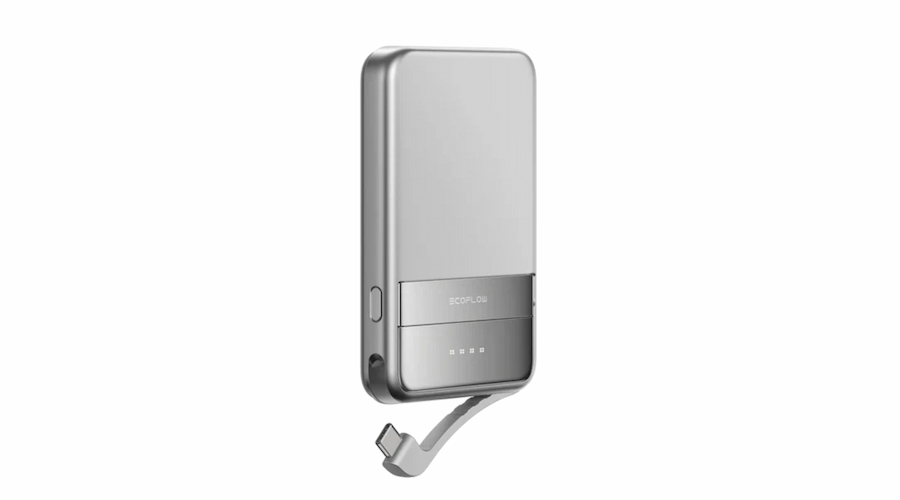

Key features:
Qi2-certified 15 W magnetic wireless charging — 50 % iPhone 15 Pro boost in ~40 min
30 W built-in USB-C cable + 30 W USB-C port — fast wired top-ups without extra leads
Rapid self-charge (30 W input) — 0 to 70 % in about half an hour
Kickstand — hands-free portrait or landscape viewing on desks and tray tables
Car-grade low-resistance cells & active cooling — keeps temperatures in check while charging
Realtime temp sensor (50× per second) — over 4 million checks a day for safety
Compact build (108 × 70 × 14.4 mm, 180 g) — easy pocket or clutch fit
2. INIU BI‑B6 Power Bank – 10,000 mAh
Sometimes you just want something that’s slim yet can get you through a day‑trip to the Goldie. That’s where the INIU BI‑B6 10,000 mAh model slots in. At roughly the size of a Tim Tam packet and noticeably lighter than most phones, it slides into your jeans pocket without that awkward bulge.
Yet the 22.5W PD 3.0/QC 4+ output is quick enough to take an iPhone from flat to the safe zone while you finish a coffee, and the USB‑C port works in both directions, so one cable covers charging and recharging. A smart trickle mode dials the power right down for earbuds and fitness trackers, meaning you can top‑up smaller gear without nuking its battery health.
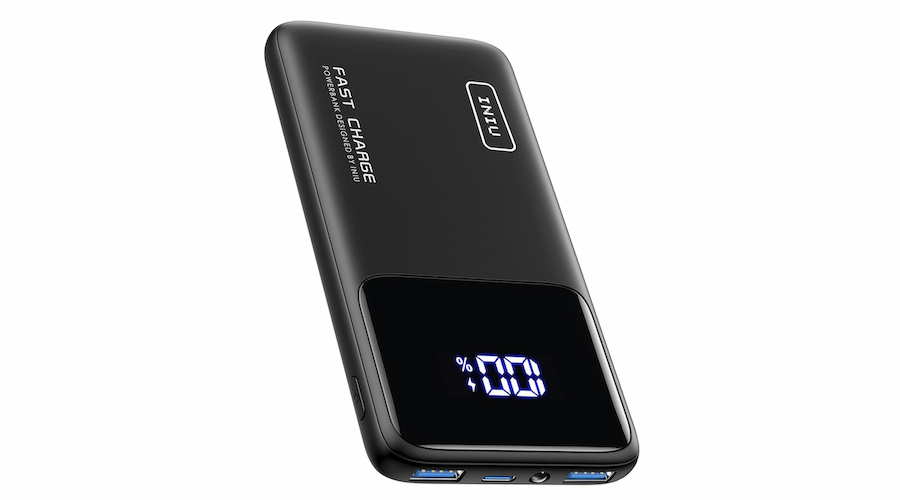

Key features:
22.5W PD 3.0 + QC 4+ fast charge — about 0 to 65 % iPhone in 30 min
USB‑C in‑and‑out port — one cable for modern iPhones, iPads, and Androids
10,000 mAh — up to 3+ phone charges
Auto‑adapt trickle mode — protects small devices and wearables
3. Charmast W1148 Power Bank – 10,000 mAh
Picture the airport lounge: three mates, three phones, one wall socket — and not a cable in sight. The Charmast W1148 keeps the peace with its nest of built‑in leads (Lightning, USB‑C, Micro‑USB) plus three extra ports, so you can juice six gadgets at once without turning your backpack into a knot of wires.
Despite the Swiss‑army vibe, it’s slimmer than most passport wallets and shows the exact percentage left on a bright LED read‑out, sparing you the mental maths of blinking dots. Commuters will like that the unit itself can be recharged three different ways, so whatever cord is handy will do the job.
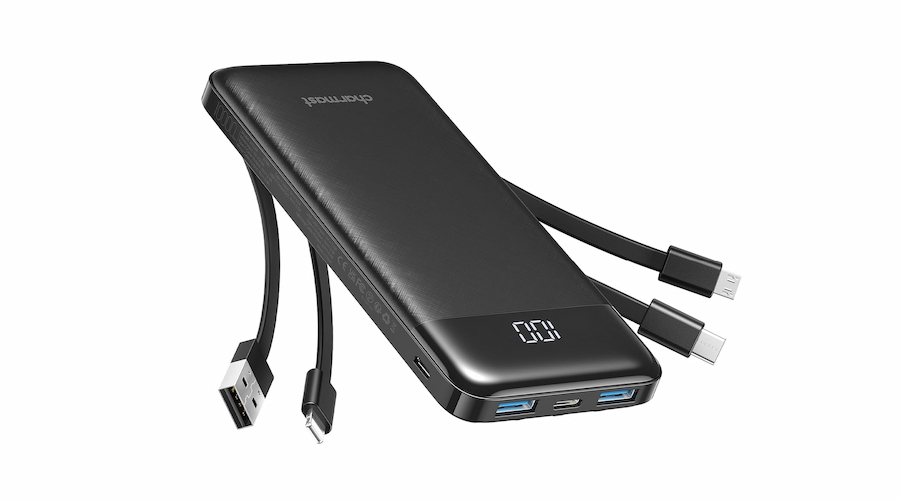

Key features:
Four built‑in cables — Lightning, USB‑C, Micro‑USB (out) + integrated re‑charge cord
Six outputs, three inputs — power up to six devices simultaneously
LED percentage display — no guessing how much juice is left
Broad compatibility — works with nearly every phone or tablet port on the market
4. Anker A1688H11 Power Bank – 10,000 mAh
The Anker A1688H11 10,000 mAh power bank comes with a built‑in USB‑C cable that survives daily bends better than your ear‑bud wires and pumps 30W out to a phone or even a lightweight laptop. Bi‑directional charging means you can also refill the pack itself at 20W in roughly the time it takes to watch a sitcom episode.Anker shaved the body down so it’s barely taller than a credit card, yet it still holds a couple of full phone charges and a pocket‑worth of headphone top‑ups.
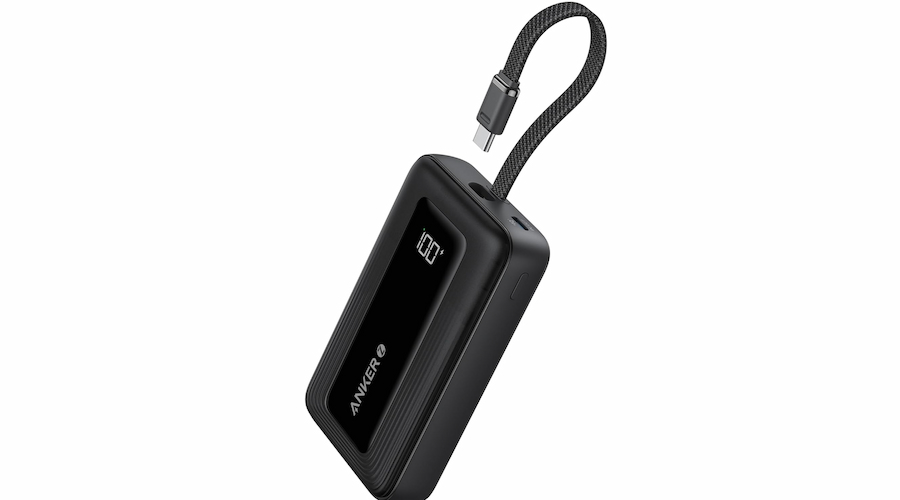

Key features:
30W fast output (PD) — 0 to 50 % iPhone 16 Pro Max ≈27 min
Durable built‑in USB‑C cable — tested to 10,000+ bends
20W fast input — quick turnaround when recharging the pack
Compact 10K capacity — ~2 full phone charges, 10× AirPods Pro boosts
5. UGREEN 25188 Power Bank – 20,000 mAh
When your “office” is a café one hour, a train carriage the next and a campsite by evening, you need more than a phone saver — you need a mobile wall socket. UGREEN’s 25188 20K pack feeds a MacBook Pro at up to 100W while topping up a phone and camera simultaneously, so you’re not rationing battery bars mid‑project.
The high‑bright LED screen gives an exact read‑out, handy when you’re juggling multiple deadlines and devices. Despite the larger capacity, clever cell tech trims bulk, making it noticeably lighter than you’d expect. Best bit: the unit itself gulps 65W in, so you can hit 100% during a lunch break instead of babysitting it overnight.
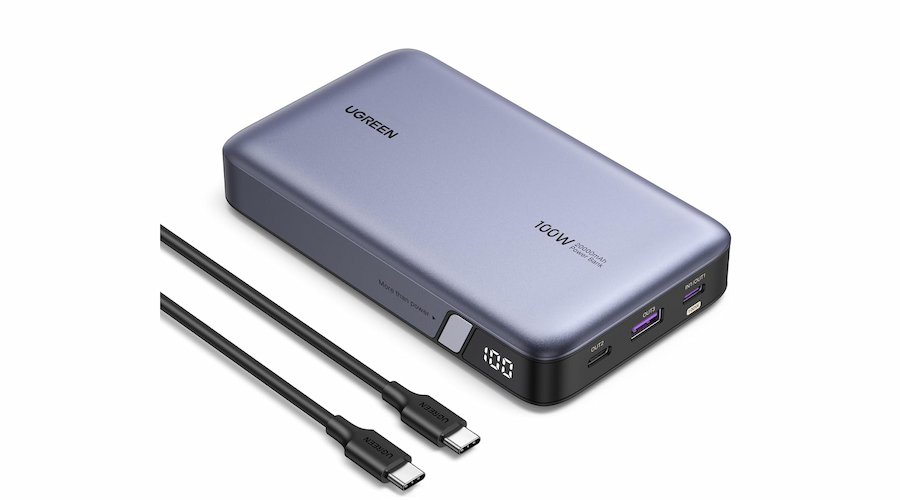

Key features:
100W USB‑C + 30W USB‑C + 22.5W USB‑A — charge three devices at once
20,000 mAh capacity — 4.5× iPhone 15 Pro or 1.1× MacBook Air 15”
65W self‑recharge — full in ~1.6 h
Includes 240W USB‑C‑to‑C cable — ready for high‑wattage laptops out of the box
What to Look for in a Power Bank?
Picking the right power bank isn’t about grabbing the biggest number on the box. Use the checklist below to match a battery pack’s spec sheet to the way you actually charge.
Capacity vs. Reality
mAh rating tells you the total stored energy, but realworld output is about 70–80 % of that once you factor in voltage conversion and heat loss.
For most phones, 5,000–10,000 mAh covers a workday or weekend. Tablets and ultraportable laptops lean on 15,000–20,000+ mAh.
Think in full charges: one overnight camp? Two phone fills will do. A week on the road? Aim higher.
Airline Limits — Don’t Get Your Pack Confiscated
Most airlines (including Qantas, Virgin Australia and Jetstar) follow IATA rules for lithium-ion batteries:
Limit | What It Means in mAh | Where It Can Go |
≤ 100 Wh | up to ~27,027 mAh | Carry-on only — no approval needed |
> 100 Wh to 160 Wh | ~27,028 – 43,243 mAh | Carryon, but you must get airline approval before you fly |
> 160 Wh | 43,243 mAh+ | Not permitted on passenger flights |
Output Speed (Wattage)
The best portable power bank should match its output wattage to your device:
25–30W is snappy enough for most phones and handles a Switch or small tablet.
65–100W is laptop territory; only pay for it if you’ll really use it.
Check for Power Delivery (PD) 3.0 or Quick Charge (QC) 4+ labels — they’re the standards most new devices speak.
Input Speed (Self-Recharge)
A fast-charging power bank isn’t much use if it takes all night to refill. 18–30W input is now common; at 65 W, a 20K pack tops up in under two hours. If the specs list “pass-through,” you can juice the bank and your phone off one wall charger at the same time.
Ports, Cables & Wireless
Count your cables. If you constantly borrow leads, a model with built‑in cords or magnetic snap‑on wireless charging is worth the premium.
USB-C in/out is a must in 2025; bonus points if it’s both directions.
Qi2-certified wireless charging caps at 15W but means no fumbling for a cord on the train.
More ports aren’t always better; weigh clutter against actual need.
Size, Weight & Ergonomics
Choose the best power bank for travel that hits the sweet spot between portability and capacity.
A 10K slimline pack is about phone-size; a 20K high-wattage brick may be double the heft.
Check the grams, not just millimetres— you’ll feel it in a jacket pocket.
Kickstands, textured grips and rounded edges make everyday handling less of a chore.
Safety & Cell Quality
Remember, a bargain that swells or overheats is no bargain.
Look for temp sensors, over-current and short-circuit protection.
Reputable brands use UL-listed or TÜV-tested cells; that matters when you’re wedging 100Wh next to your passport.
A low-resistance cell design runs cooler, prolonging both the pack’s and your phone’s battery life.
Extras Worth Paying For
Digital percentage displays beat blinking LEDs when you’re planning long trips.
Eco credentials — recycled plastics, replaceable batteries — are becoming more common if sustainability matters to you.
A solid 18- to 24-month warranty shows the maker backs its cells.
Conclusion
At the end of the day, the best power bank is the one that fits how you live and work. Maybe that’s something slim for your daily commute, a Qi2-certified wireless battery pack you can just snap on your iPhone, or a fast-charging 20,000mAh model that’ll handle all your gear on the road. Whatever your needs, there’s a solid option out there. And now you know what to look for, you’re all set to pick one that won’t let you down.
FAQs
Which brand power bank is best in Australia?
There’s no single winner for everyone, but EcoFlow, Anker, Charmast, and UGREEN consistently score well for safety, design, and real‑world charge speeds. Choose the brand that offers the features you need (wattage, ports, size) at a price you’re happy to pay.
Should I get a 10,000mAh or 20,000mAh power bank?
A 10,000 mAh model is lighter and pocket‑friendly; good for two phone charges on a typical day out. A 20,000 mAh power bank, on the other hand, is heavier but ideal for weekends away, tablets, a laptop, or charging two devices at once. Pick the capacity that covers your longest day without adding more bulk than you’ll actually carry.
Is a 20,000mAh power bank allowed in flight in Australia?
Yes. A 20K battery pack is roughly 74 Wh, well under the 100 Wh carry‑on limit set by Qantas, Virgin Australia, Jetstar, and most global airlines. Just keep it in your cabin bag—power banks are never allowed in checked luggage.
Which is the best power bank for mobiles?
It depends on your specific needs, but if you want a single, go‑to pick, the EcoFlow RAPID Magnetic Power Bank (5,000 mAh) stands out. Its 15W Qi2-certified magnetic pad snaps securely onto MagSafe-enabled iPhones, the built‑in 30W USB‑C cable handles fast‑charge Androids, and the pack itself recharges to 70 % in about half an hour—making it a tidy all‑rounder for everyday mobile use.